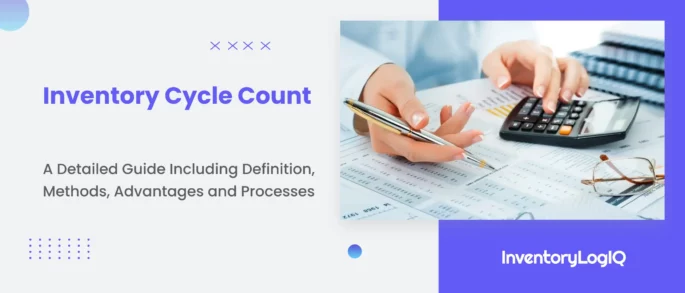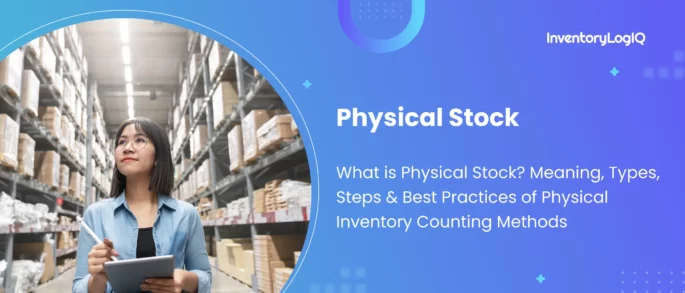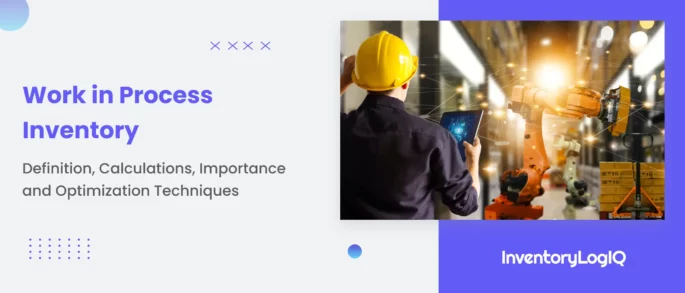Perpetual Inventory System Guide: Definition, Methods, Factors Considered, Benefits & How is Perpetual Inventory Different From Periodic Inventory Systems in 2023
For any sustainable and successful business, a sound inventory system is required to track goods throughout the supply chain cycle. From purchasing raw materials to producing the goods and, finally, selling the product, proper inventory management is key. It’s an effective system that keeps records of purchased materials, sales inventory and also stock-on-hand details of your business entity.
The fundamental structure of inventory management includes inventory purchase (ready-to-sell goods that are procured and delivered to the point of sale or warehouse), storage of inventory (inventory that is stored until needed) and goods and materials that are at different stages of the fulfillment network. There are two types of inventory, as stated below:
- Periodic Inventory
- Perpetual Inventory
While both these accounting methods are similar (businesses use them to track the number of products, stock availability, etc.), they have several inherent differences.
- What is a Perpetual Inventory System?
- 6 Main Differences Between Perpetual Inventory and Periodic Inventory Systems
- Advantages of Perpetual Inventory
- Disadvantages of Perpetual Inventory
- 5 Operations of a Perpetual Inventory System
- 6 Things to Consider Before Choosing An Inventory System
- The 3 Main Methods of a Perpetual Inventory System
- Perpetual Inventory Benefits for eCommerce Businesses in 2023
- Conclusion: How InventoryLogIQ Can Help You Monitor Your Perpetual Inventory
- Perpetual Inventory System: FAQs
What is a Perpetual Inventory System?
A perpetual inventory system allows businesses to keep a real-time account or stock of inventory on hand. The widespread usage of computers and technology has made this system very effective. Businesses worldwide have found that this system is highly user-friendly and has fostered the ease of conducting various processes, eliminating redundancies and complexities of the traditional inventory system.
Barcodes, Radio Frequency Identification Scanners (RFID) and point of sales systems supported by perpetual inventory systems quickly input inventory information of all business transactions on a real-time basis. Perpetual Inventory Systems are popular in modern business. They are often found in large businesses across multiple industries, such as jewelers, electronic stores and global enterprises such as restaurant chains, clothing stores, etc.
Perpetual inventory systems track the details of product sales instantly through point-of-sale systems (PoS). However, perpetual inventory does not keep track of physical stock/products. Inventory reports can be accessed online at any time, making it easier to manage inventory levels and the cash needed to purchase additional inventory. Updates are automatically created when you receive or sell inventory. Your inventory accounts immediately reflect data about purchases, return of goods and stock data.
6 Main Differences Between Perpetual Inventory and Periodic Inventory Systems
A perpetual inventory system constantly updates the purchase and sales records constantly, which provides a real-time reflection into what is staying or leaving the warehouse. A periodic inventory system only records updates to inventory and costs of sales at scheduled times throughout the year, not on a constant basis.
While a perpetual inventory system can record and monitor the movement of the stock non-stop, a periodic inventory system can update inventory records at intervals, which happens after the stock is physically accounted for. The 6 main differences are listed in the table below:
| Perpetual Inventory System | Periodic Inventory System |
|---|---|
| This inventory system traces every single movement of inventory, as and when the need arises, on a real-time basis. | This system updates inventory records at periodic intervals such as yearly or quarterly. |
| Stocks are updated continuously and on an ongoing basis. | Stocks are updated at the end of the accounting period. |
| This method does not influence or hinder day to day business operations. | Under this system, business operations need to be stopped or paused during valuation. |
| The balancing figure is based on the inventory itself. | The balancing figure is based on Cost of Goods Sold (COGS). |
| It maintains information about inventory and the cost of sales. | It captures information about inventory and the cost of goods sold. |
| Perpetual inventory systems are in contrast to periodic inventory systems, in which reoccurring counts of products are utilised in record keeping. | The periodic inventory method maintains counts of physical products. |
Advantages of Perpetual Inventory
There are multiple advantages of perpetual inventory, which gives companies the ability to operate more effectively. They are listed below:
Provides Updates in Real-Time
Perpetual inventory maintains live records of inventory as soon as it is bought or obtained by the company. This enables the retailer to always be aware of when stocks are running low, which items are popular, when items were bought etc., so they can plan accordingly and be ahead of the curve.
Manages Inventory in Multiple Warehouses
Gone are the days when companies had to maintain multiple spreadsheets or files and manually add and remove items from the list. Perpetual inventory systems consolidate all your inventory records which is stored across multiple warehouses in one place. This will help make processes more efficient and will surely mitigate any errors or delays.
Keeps Users Informed Through Forecasting
Using perpetual inventory, retailers have a better idea of their customers’ purchasing patterns based on the inventory sold. They will have a better idea of which products are in demand, during which season and which price point is doing the best. They will also get an idea of which products aren’t doing well and are just accumulating space in the warehouse. This understanding will help the business forecast demand and supply in the future.
Suggested Read: What is Inventory Forecasting?
Assists in Accounting Procedures
Inventory is a key aspect of every accounting process as it gauges the value of the assets that firms have on hand. Since perpetual inventory systems constantly track and provide updates on inventory levels, it becomes much easier and faster to access this information.
Disadvantages of Perpetual Inventory
Can be Expensive
Perpetual inventory is generally regarded as not being a pocket-friendly solution because of all the technology and software that is needed to enable it. Adding new inventory lists can also be chargeable, in addition to needing to train employees on how to use them. Overall, it may not be the best option for small businesses that do not need to calculate inventory for multiple different warehouses.
Does Not Consider Expired and Mishandled Goods
Since perpetual inventory systems utilize data from sales and purchases to maintain records of inventory, it sometimes leaves out items that have been purchased but may have expired or have broken due to mishandling. Since manual counts are not performed, the management will continue to count those items unless someone has physically noticed the incident. This opens the door for unwanted errors and discrepancies in the inventory count.
5 Operations of a Perpetual Inventory System
Point-of-Sale System
A point-of-sale or point-of-purchase in a perpetual inventory system is the place where the customer walks up to your checkout counter after they pick up a product or service at a store or business entity. A point-of-sale is the combination of hardware units and software applications that enable your business to make those sales to customers.
Cost of Goods Sold Updates
Cost of goods sold (COGS) refers to the direct costs of the production of goods sold by a company. This includes the cost of the materials procured and labor hired to create the goods. Indirect expenses like distribution costs and sales force costs are excluded in COGS.
Reorder Point Automation
A reorder point system alerts you about when to place an order, so you won’t run out of stock and tells you when to place a requisition to replenish your stocks. The reorder automation point automatically calculates your stock based on supply chain forecasting that is based on past consumption data (historical data) to forecast future requirements.
Purchase Order Automation
Purchase Order Automation Systems streamline your purchase orders to increase efficiency by tallying with the corresponding invoice and requisition purchase requests automatically.
Warehouse Management Software
Typically, any warehouse management system (WMS) is designed to monitor the entire inventory in hand. It can also manage supply chain operations right from the manufacturing or distribution center and can coordinate with different parts of the supply chain to get tasks done.
6 Things to Consider Before Choosing An Inventory System
Requirements
You first need to assess your requirements and make a decision based on that. A small business would require a very different inventory management system than a multinational company. You would need to be aware of how much inventory you would need to manage, the nature of the inventory, the value of the items, etc.
Expenses
Because of the fact that certain inventory management systems are so dependent on technology, such as the perpetual inventory system, prices can easily skyrocket, which would be pointless if you don’t need all those features in the first place. Choose a system that fits your budget so that you can invest in other facets of your business.
Configuration Options
If your business deals with multiple types of inventory, scattered across different warehouses, it would be important to make a note of the customizability of the system so that you can get the most out of it. It would not be of any help if you are not able to manage your inventory as efficiently as possible due to constraints in your inventory management software.
Ease of Use
It is important for businesses, especially smaller ones, to factor in ease of use when they are opting for an inventory management system. If the system is too complicated and requires a sharp learning curve, it could take days for your employees to get accustomed to it. Choose a system that has all the features you are looking for but that is also well-designed and user-friendly.
Integration Ability
Inventory is the key component of any eCommerce business. It pays off to have an inventory management system that can play nice with other software tools and systems involved in other business activities. There shouldn’t be a bottleneck in any section of the business and you can do your best to make sure your inventory management system can integrate well with other applications.
Flexibility
Flexibility is a very important factor to consider while choosing an inventory management system since it’ll be handling such a key aspect of your business. You need to find out things like if it is compatible with devices of all screen sizes, what software platform it uses and if it can integrate with other systems. Once you understand this, it’ll make your decision much easier.
Support
After-sales support is a key factor when choosing an inventory management system, especially if you have shelled out a decent amount. You would want to have access to facilities such as tutorials and customer support in case something goes wrong and you need some assistance. Companies that care about their customers even after the sale is made often provide the best services.
The 3 Main Methods of a Perpetual Inventory System
FIFO Perpetual Inventory Method
FIFO is a cost flow tracking system under which the first unit of inventory acquired is considered to be the first unit consumed or sold. The perpetual FIFO inventory method determines the cost of your oldest inventory and multiplies that cost by the total amount of inventory sold.
LIFO Perpetual Inventory Method
This method is a cost flow assumption that businesses use to evaluate their stocks wherein the last items placed in inventory are the first items sold. To Summarise, the last costs available at the time of the sale are the first to be removed from the Inventory account and debited to the Cost of Goods Sold account.
Weight Averaging Cost Perpetual Inventory Method
The weighted average cost method is a means of tracking inventory that assigns a cost to each unit based on the average cost of all units that are available for sale during a specified time period. The weighted average cost per unit is arrived at by adding the total cost of all units available for sale divided by the total number of units available.
Perpetual Inventory Benefits for eCommerce Businesses in 2023
Shortens the Time Needed for Accounting Procedures
During the preparation of financial books, usually at the end of the year, the value of the closing stock needs to be known. With a perpetual inventory system, this information is always on-hand as it reflects any changes to the inventory in real-time, which helps to speed up accounting procedures.
Requires Less Investment in Materials
Since perpetual inventory systems keep track of every purchase and sale of inventory, whether it is raw materials, finished goods or work-in-progress inventory or products, businesses can get a clear idea of the what amounts they are spending on what materials and it can help them optimize the quantities that are needed and thus, reduce inventory costs.
Helps in Restocking
A business will be able to know if inventory of a certain product is running low and will be able to reorder items before it runs out completely. This aids in the continuous fulfillment of customer orders and keeps the business running smoothly and effectively.
Optimizes the Use of Resources
Since perpetual inventory gives us a clear idea of what the expenses and incomes of the business are and where they are entering and exiting from, the business can optimize every process that involves working capital, whether it is labor working on a particular task, the purchase of materials, the transport of goods, etc.
Helps Provide a Clear Picture
Perpetual inventory systems update inventory levels in real-time. This means that you will always have an idea of which products are doing well and which aren’t. In addition, you’ll get access to more granular data such as seasonal demand for products, what causes spikes and dips in demand and much more.
Conclusion: How InventoryLogIQ Can Help You Monitor Your Perpetual Inventory
A perpetual inventory system provides more accurate information because ongoing recording and prompt verification of inventory are done. Perpetual inventory also enables financial statements to be prepared quickly and accurately. A Perpetual inventory system is best suited for big enterprises, while a periodic inventory system is suitable for small businesses.
Perpetual inventory is the preferred method for tracking inventory with accurate results on an ongoing basis. If you need help with acquiring a perpetual inventory system for your business and any other inventory-related requirements, InventoryLogIQ can be a good option for you.

InventoryLogIQ has a custom OMS that aids in providing real-time updates of your inventory levels across multiple warehouses. In addition, our platform can integrate with most big eCommerce marketplaces to ensure that all your inventory management and order fulfillment happens in one centralized location. We also give you deep insights into the inner workings of your inventory and order-related data so that you can plan ahead.












